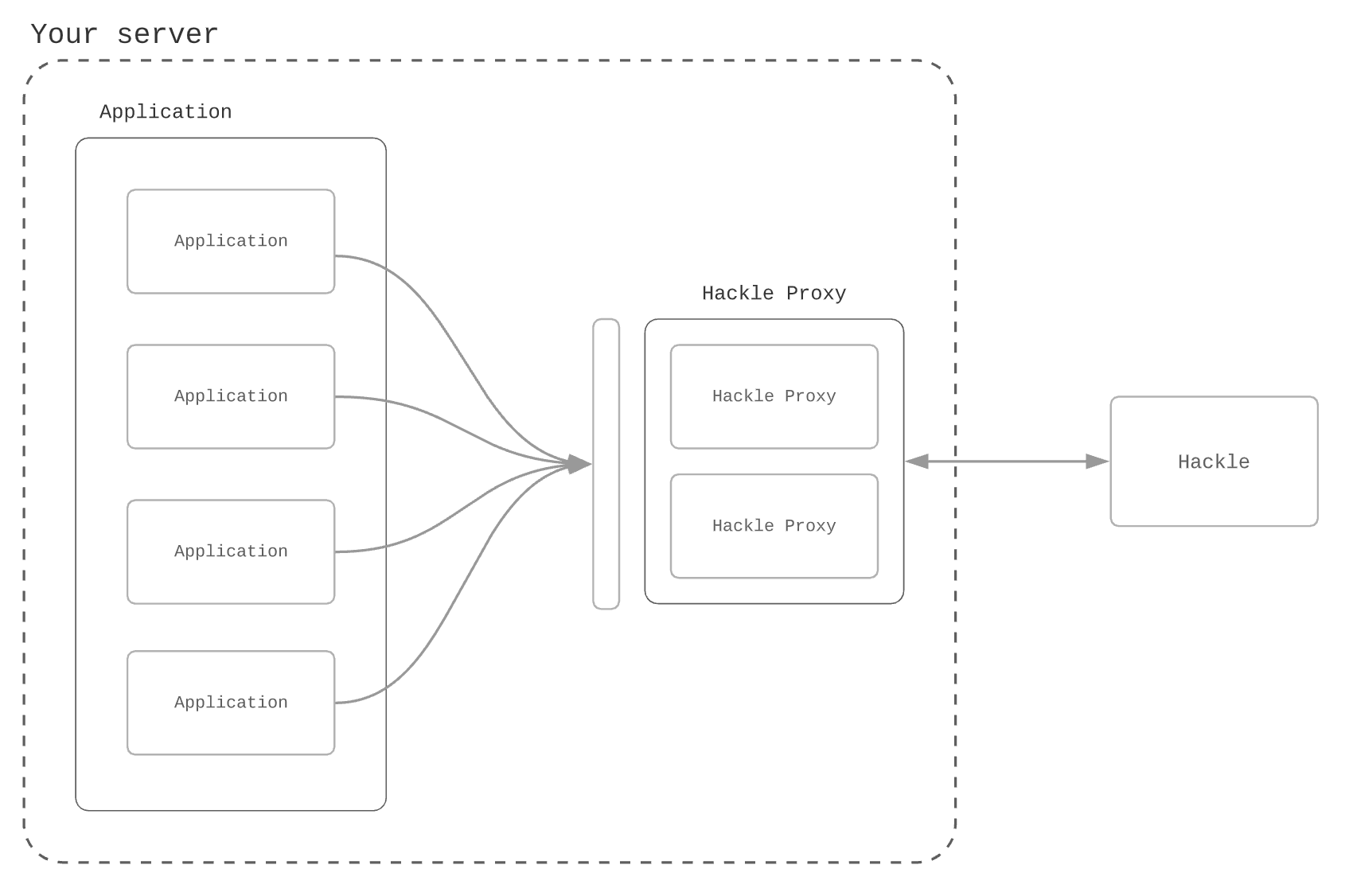Hackle Proxy
This document provides information on how to install and use the Hackle Proxy.
RecommendationIf your application is based on a development platform with a language included in our current list of supported SDKs, we recommend that you use an SDK instead.
1. Overview
Hackle Proxy is a standalone centralized service for calling services from Hackle. The Proxy Rest API allows you to use the functions provided by the Hackle SDK.

2. When should I use the Hackle Proxy?
If the language used to create your application and webpage is not supported by any of the Hackle SDKs, your application can still be linked to Hackle using our Hackle Proxy. However, if there is an SDK that supports the language you are using, it is recommended that you integrate using SDK. In special cases such as PHP, it can be used at the same time as SDK.
A list of development platforms supported by SDK can be found in the SDK Integration document.
3. Install Hackle Proxy
The Hackle Proxy requires installation, and you can find out how to install it in the documents on installing the Hackle Proxy.
4. Hackle Proxy API
The API provided by Hackle Proxy can be found in the Hackle Proxy API documents.
5. Best Practices
This varies depending on different situations but the best practice is something to always consider in general.
5.1 How many Proxy instances should I deploy?
Proxy is typically implemented to scale from lower specifications. It is recommended that you deploy at least two instances for a reliable configuration.
5.2 Using the Load Balancer
It is recommended that you use a load balancer for routing traffic for reliable expansion for Proxy instances. With AWS, you can use AWS Elastic Load Balancer to reliably scale up your Proxy instance as internal traffic increases.
Updated 4 months ago
